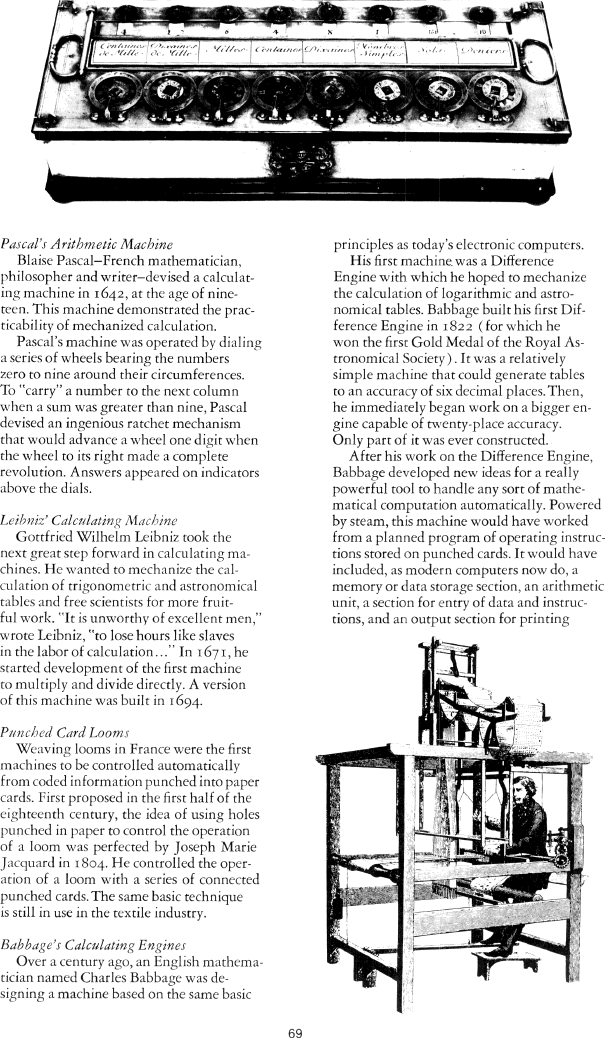The Best of Creative Computing Volume 1 (published 1976)
Digital Calculators - Then And Now (abacus, Pascal's Arithmetic Machine, Leibniz Calculating Machine, Punched Card Looms, Babbage's Calculating Engines)

Pascal's Arithmetic Machine
Blaise Pascal-French mathematician, philosopher and writer-devised a calculating
machine in 1642, at the age of nineteen. This machine demonstrated the
practicability of mechanized calculation.
Pascal's machine was operated by dialing a series of wheels bearing the numbers
zero to nine around their circumferences. To "carry" a number to the next column
when a sum was greater than nine, Pascal devised an ingenious ratchet mechanism
that would advance a wheel one digit when the wheel to its right made a complete
revolution. Answers appeared on indicators above the dials.
Leibniz' Calculating Machine
Gottfried Wilhelm Leibniz took the next great step forward in calculating
machines. He wanted to mechanize the calculation of trigonometric and
astronomical tables and free scientists for more fruitful work. "It is unworthy
of excellent men," wrote Leibniz, "to lose hours like slaves in the labor of
calculation..." In 1671, he started development of the first machine to multiply
and divide directly. A version of this machine was built in 1694.
Punched Card Looms
Weaving looms in France were the First machines to be controlled automatically
from coded information punched into paper cards. First proposed in the first
half of the eighteenth century, the idea of using holes punched in paper to
control the operation of a loom was perfected by Joseph Marie Jacquard in I804.
He controlled the operation of a loom with a series of connected punched cards.
The same basic technique is still in use in the textile industry.
Babbage's Calculating Engines
Over a century ago, an English mathematician named Charles Babbage was designing
a machine based on the same basic principles as today's electronic computers.
His first machine was a Difference Engine with which he hoped to mechanize the
calculation of logarithmic and astronomical tables. Babbage built his first
Difference Engine in 1822 (for which he won the first Gold Medal of the Royal
Astronomical Society). It was a relatively simple machine that could generate
tables to an accuracy of six decimal places. Then, he immediately began work on
a bigger engine capable of twenty-place accuracy. Only part of it was ever
constructed.
After his work on the Difference Engine, Babbage developed new ideas for a
really powerful tool to handle any sort of mathematical computation
automatically. Powered by steam, this machine would have worked from a planned
program of operating instructions stored on punched cards. It would have
included, as modern computers now do, a memory or data storage section, an
arithmetic unit, a section for entry of data and instructions, and an output
section for printing
69


